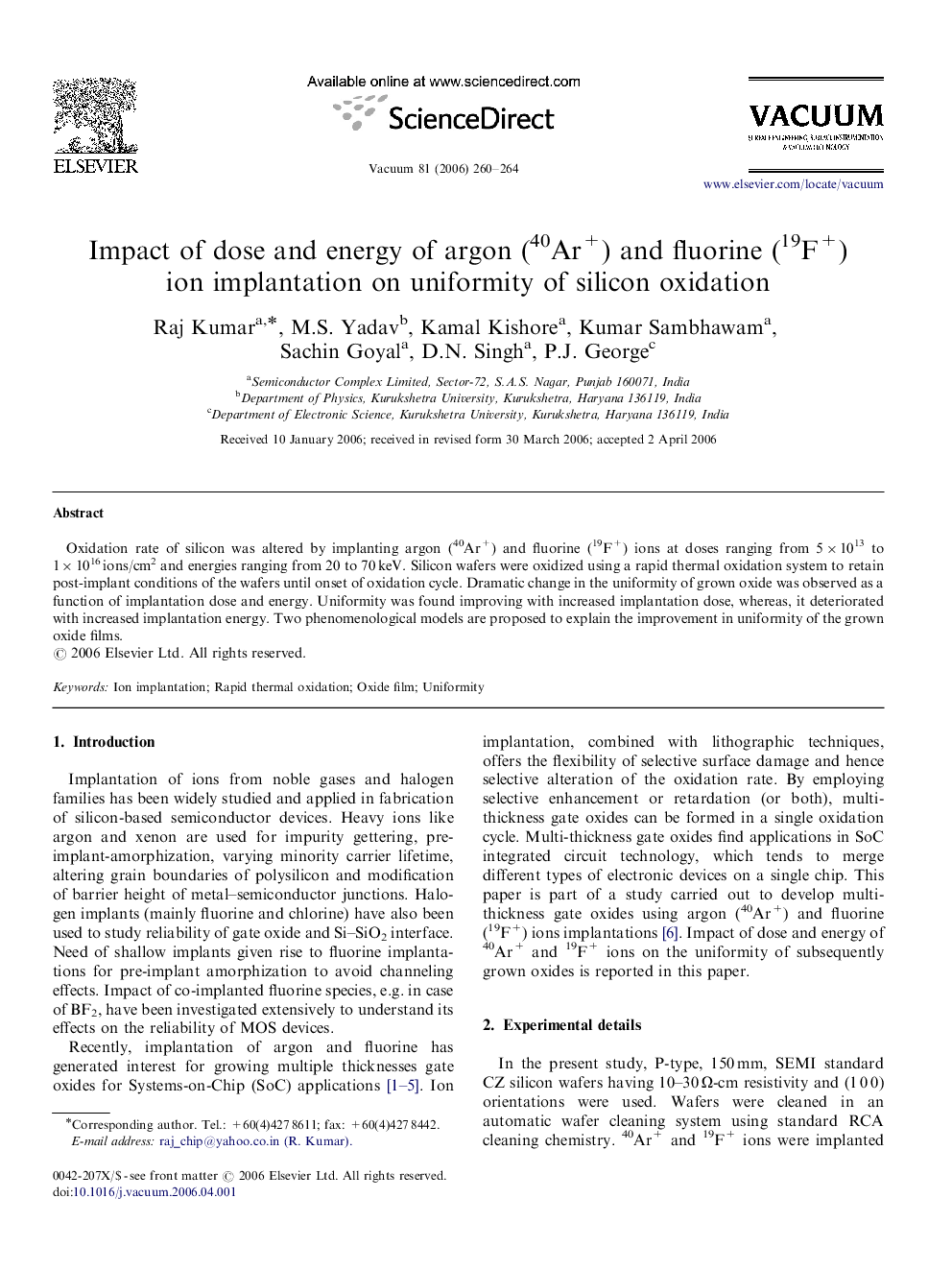| Article ID | Journal | Published Year | Pages | File Type |
|---|---|---|---|---|
| 1689970 | Vacuum | 2006 | 5 Pages |
Abstract
Oxidation rate of silicon was altered by implanting argon (40Ar+) and fluorine (19F+) ions at doses ranging from 5Ã1013 to 1Ã1016Â ions/cm2 and energies ranging from 20 to 70Â keV. Silicon wafers were oxidized using a rapid thermal oxidation system to retain post-implant conditions of the wafers until onset of oxidation cycle. Dramatic change in the uniformity of grown oxide was observed as a function of implantation dose and energy. Uniformity was found improving with increased implantation dose, whereas, it deteriorated with increased implantation energy. Two phenomenological models are proposed to explain the improvement in uniformity of the grown oxide films.
Related Topics
Physical Sciences and Engineering
Materials Science
Surfaces, Coatings and Films
Authors
Raj Kumar, M.S. Yadav, Kamal Kishore, Kumar Sambhawam, Sachin Goyal, D.N. Singh, P.J. George,
